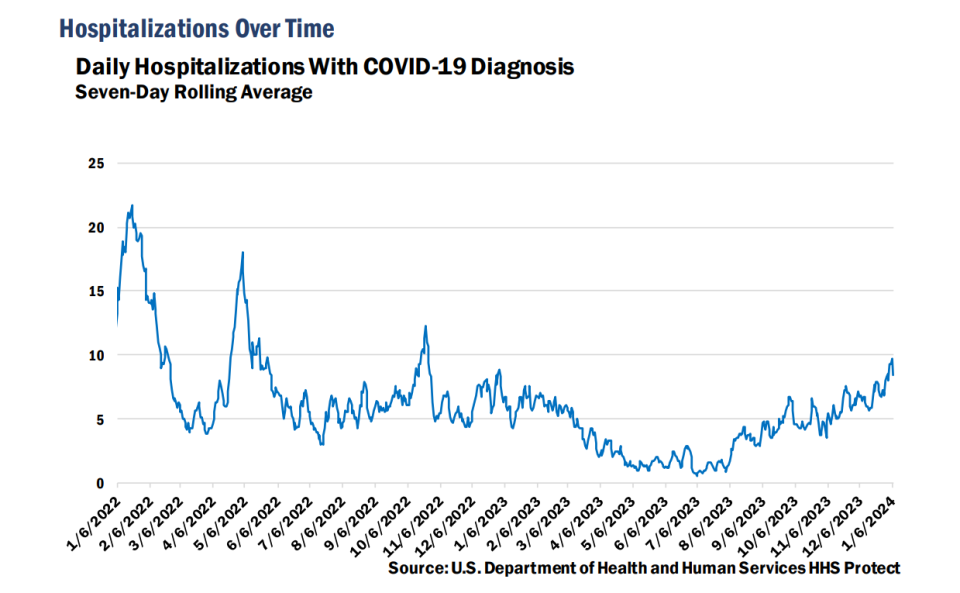COVID, respiratory illness spikes in Vermont: UVM Medical Center employees told to mask up
Due to rising COVID-19 cases and other respiratory illnesses this winter, University of Vermont Medical Center employees are once again wearing face masks when interacting directly with patients.
As of Thursday, Jan. 11, UVM Medical Center employees are required to mask up in patient rooms, exam rooms, during direct patient care and, when requested by a patient, in non-patient-care situations. Only employees must adhere to the new mask requirements, although patients and visitors showing signs of a respiratory illness are still required to wear masks in all UVM Medical Center facilities.
Masks are optional in public areas within the center, including hallways, nurses' stations, cafeterias and shuttles. Even so, all patients, visitors and employees are encouraged to don masks in UVM Medical Center facilities, particularly people who are immunocompromised, who are not feeling well, or who came into contact with a person battling a respiratory illness.
What are the symptoms? COVID variant JN.1 is nearly half of COVID cases in US, CDC says.

Respiratory illness trends: Cases, hospitalizations low, but increasing
Respiratory illnesses have increased in Vermont this season, with incidences increasing due to extensive travel and time spent indoors during the holidays, said Ben Truman, spokesperson for the Vermont Department of Health.
Despite the overall uptick, however, cases and hospitalizations for COVID-19, the flu, RSV and other respiratory diseases remain low.
According to data from the Vermont Department of Health, there were only 59 hospitalizations (or less than 10 per 100,000 people) and five deaths from COVID-19 between Dec. 31 and Jan. 6. During this same period, emergency room visits for COVID-like Illness increased almost 5%, lower than in 2021 and 2022 but near 2023 levels. Overall, there were 455 cases reported to the Health Department that week.
COVID-19 wastewater data, however, paints a different picture: viral activity is high in Vermont. Biobot wastewater monitoring data from Jan. 6 shows that the Northeast at the time had the highest average concentration of COVID-19 out of any region in the country at 2,611 copies per milliliter of sewage, almost double the next highest concentration, which was in the Midwest (1,342 copies/mL).
Is it right?: COVID-19 home tests results can read wrong if the tests are expired: How to check
Concentrations in Chittenden County, which have doubled since Dec. 23, were even higher than at 2,871 copies/mL. In comparison, Burlington's Main Plant had a concentration of 3,626,316 copies per liter or roughly 3,626 copies/mL, the highest concentration of COVID-19 in any Rose City wastewater plant since Jan. 17, 2023 (approximately 4,794 copies/mL), according to the city's COVID-19 wastewater monitoring report.
Megan Stewart is a government accountability reporter for the Burlington Free Press. Contact her at mstewartyounger@gannett.com.
This article originally appeared on Burlington Free Press: UVM Medical Center employees required to wear masks near patients

